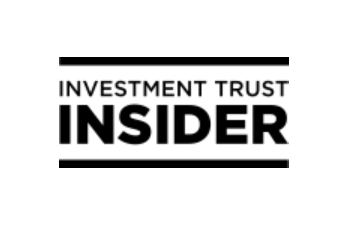Investment trust Insider on P2P and Honeycomb – James Carthew: a P2P merger with Honeycomb makes sense
One of the more interesting stories that emerged over the summer came from Sky News revealing the collapse of merger talks between P2P Global Investments (P2P) and Honeycomb (HONY) investment trusts. I do not know whether there was any truth to this – neither company said anything publicly after the story was published – but a merger makes sense.
The two direct lending funds are managed by Pollen Street Capital – Honeycomb from launch in December 2015 and P2P since September 2017 when Pollen Street Capital completed its merger with MW Eaglewood, P2P’s former manager.
With combined investment assets in excess of £1.7 billion and a combined market value in excess of a £1 billion, this would be one of the largest funds across the three debt sectors – only BioPharma Credit (BPCR) would be larger.
Pollen Street has worked hard to get P2P’s portfolio into shape and this is showing up in improved performance but returns are still lagging those of Honeycomb (P2P made 5.2% in 2018 and 2.5% over the first half of 2019 – the equivalent figures for Honeycomb were 8.4% and 3.8%).
Pollen Street has been selling/running off the US/UK consumer debt that P2P was financing under MW Eaglewood. It has also drastically reduced its exposure to loans made to small and medium-sized companies through the Funding Circle platform. By 30 June, the legacy portfolio represented just 10% of P2P’s assets.
On 23 August, P2P announced the sale of its entire interest in Castlehaven Finance for gross proceeds of €250 million. This Irish business finances property development and provides bridging finance to property companies. The sale fetched a premium price and reflects, I think, a desire to reposition the portfolio rather than any perceived problem within the Castlehaven business.
Today, when compared to Honeycomb, P2P has a bit more of a bias to structured loans (where there is an ‘equity’ cushion that would absorb the first loss if the borrower ran into problems) and a lower allocation to whole loans. P2P also operates with slightly higher leverage (gearing was 55% at the end of June compared to 46% for Honeycomb at the end of July).
Even though the funds are better aligned, Honeycomb’s shareholders might demand that a merged company runs with dual share classes and two portfolios to start off with (a bit like running ordinary share and C-share pools), while the final transition of the P2P portfolio is completed.
There is a stumbling block, however and the problem lies with Honeycomb rather than P2P. Nearly 22% of Honeycomb’s shares s are owned by Woodford… read more here
